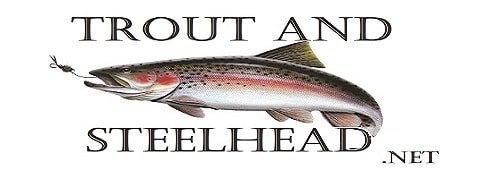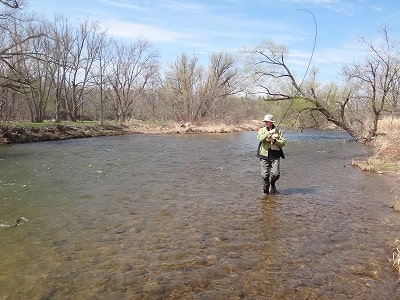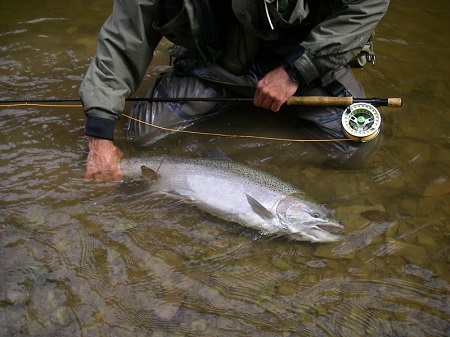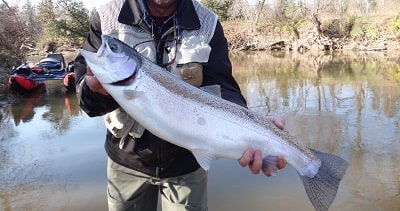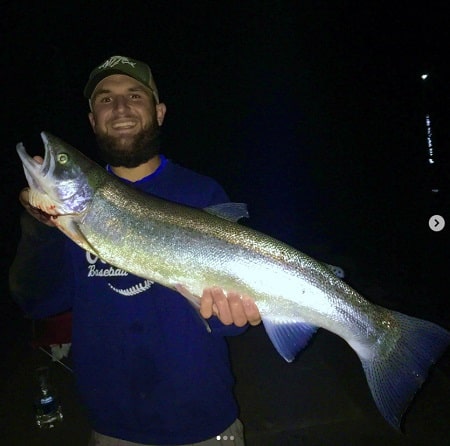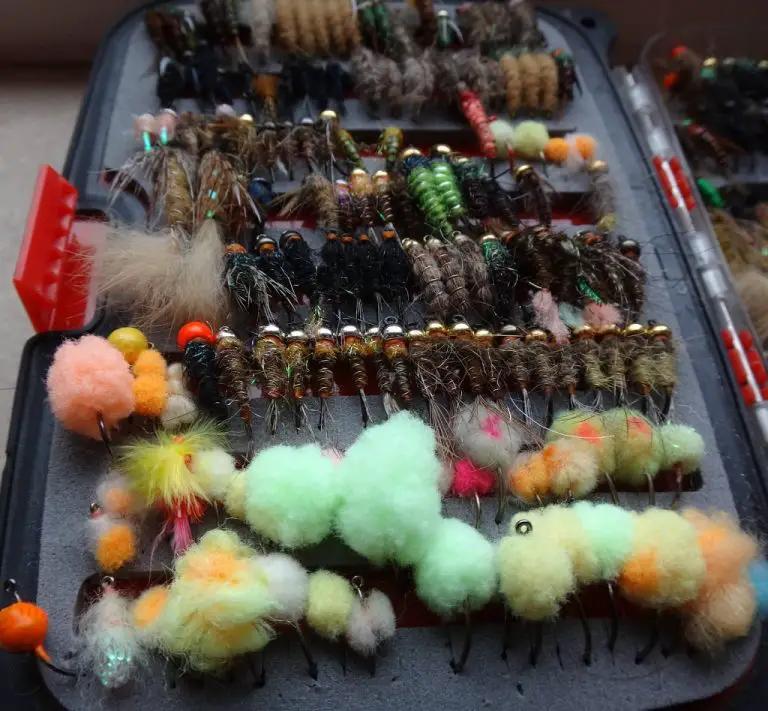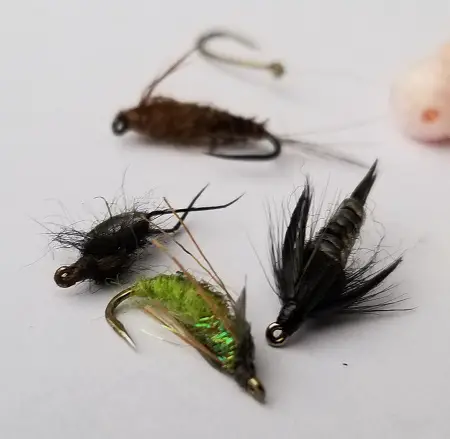16 Mile Creek PA: Steelhead Fishing
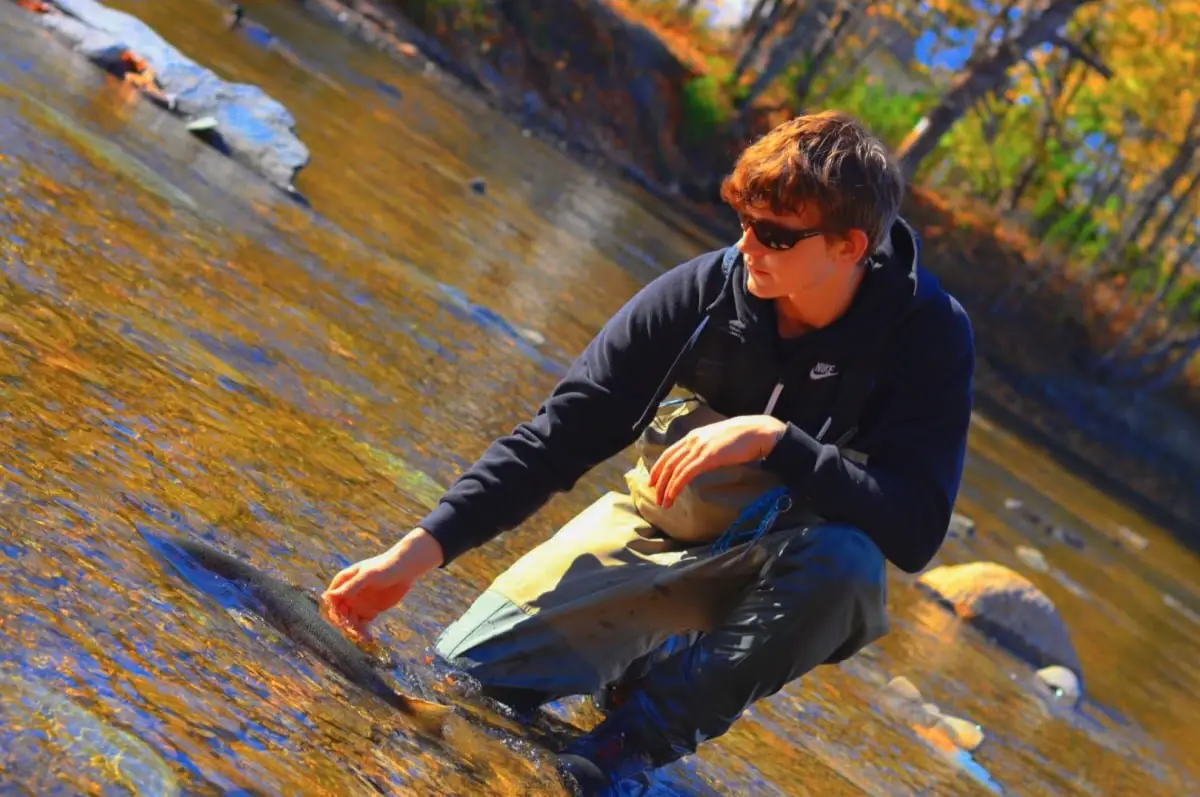
16 Mile Creek Steelhead Fishing can be excellent from October to Late April, and anglers who fish below the falls when the big runs come in can ve very successful. Sixteen Mile Creek steelhead anglers will do well with fly and float fishing methods and with the right baits.
I will discuss all of this in this article.
16 Mile Creek Steelhead Fishing
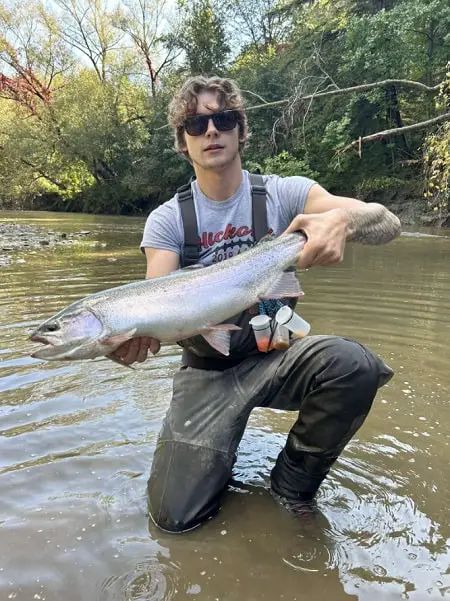
16 Mile Creek is one of the many tributaries that empty into Lake Erie in Pennsylvania. It starts 16 miles from the lake which is how it got its name. It enters Lake Erie just north of the town of North East, PA.
The steelhead fishing starts at the mouth of the river and ends at the waterfalls just upriver of Route 5.
Anglers should be aware that a waterfall upriver of Route #5 limits the migration of steelhead, and the best steelhead fishing is below the falls.
There are reports of brown trout in the river which can be both wild or stocked.
There are various access points to the creek, including:
- The Halli Reid Park, where the waters are deep and slow. You will find ample parking at the park, and this is great water for anglers who like to cast lures or use methods like plunking.
- On North Mill Street, next to the sewage plant, there is an area that anglers use for parking. Anglers can walk down to the waterfall and fish the big pool there.
- To the south, near Curtis Road. This spot typically has steelhead only during high waters, particularly after the rains.
The steelhead fishing can be very good as the runs come into the river in the spring and fall
The average steelhead weighs five to eight pounds and the sheer number of steelhead make the fishing really good. Anglers can catch larger fish over 12 pounds.
The Best Time to Fish for Steelhead on 16 Mile Creek
Steelhead are present from late October to May, but there are peak times when anglers should concentrate their efforts.
Fall Steelhead Fishing
Fall teelhead fishing starts in the fall. Steelhead runs start in October after heavy rains raise water levels.
Occasionally some small sporadic steelhead runs will come in in late September if there are cold nights combined with cold rains.
Timing the runs in the fall can reap big rewards with sometimes days with dozens of steelhead hooked. The best times to fish in the fall are 1 or 2 days after significant rains raise the water levels. This increased flow triggers the runs.
Use big bright-colored baits in the dirtier water, and as the river clears two or three days later, go to more natural colors and smaller sizes.
One of the best things about fishing 16 Mile Creek is that it clears pretty quickly after the rains or a storm so when other nearby rivers are too muddy to fish, 16 Mile steelhead fishing can be hot.
Winter Steelhead Fishing
Steelheads are also present through the winter until springtime. Anglers are wise to plan a fishing trip at any time starting in late October through to April but try to be on the Creek one or two days after a rain for best success.
Winter fish can be hit and miss. When temperatures are freezing in the winter, there may be some days when the fish are utterly inactive. They will not want to bite or move around, making it much harder to catch them, and early mornings are the worst time to fish at this time.
Anglers often do better on sunny days between 11 a.m. and 2 p.m., when water temps are stable or at their warmest. This is particularly true on icy days in January and February.
Guide Tip: The water treatment plant just upriver of the waterfalls dumps in warmer water, which can slow the river’s freezing and keep the Steelhead active when other creeks are frozen over.
16 Mile Creek Spring Steelhead Fishing
Spring fishing can be fantastic and the steelhead enters the river in late February and early March when the days are warmer and the snow starts melting.
Late March and early April are the peak times for spring steelhead. You might even find the odd steelhead still hanging around the river in early May.
Knowing how to fish for pre-spawn and post-spawn steelhead will greatly improve your chances of catching steelhead.
For more info on how to catch steelhead throughout the seasons, See my article How To Catch Steelhead In Rivers
Fishing in the summer is not a wise move since the Creek is typically too warm and low for steelhead. Anglers might still catch the odd smallmouth bass closer to the lake but it’s unusual to find any steelhead in the river during the summer.
The Best Fishing Methods
Most fishing methods will work for steelhead here.
Fly Fishing
Fly fishing for steelhead involves casting a fly, usually below an indicator, or using what is known as Euro Nymphing. Fly fishing is particularly effective in its faster shallow runs, pockets, and pools.
The young steelhead view flies as an essential source of the nutrients they need to grow, so they rely on flies as a food source. Older steelhead will still consider flies as a good food source, and they will rarely pass up an opportunity to grab a well-presented fly.
Some of the best fly fishing methods include nymph fishing, streamer fishing, and Euro nymph fishing.
For fly fishing to work, you need to present the flies naturally to the fish. For the best results, consider using colored egg patterns, pheasant nymphs, stonefly nymphs, or worm patterns.
Fly fishing can be a rather challenging and demanding fishing technique for some anglers but those that do it well can catch a lot of steelhead. To learn how to do this well, check out my page Fly Fishing For Steelhead: Great Lakes Style.
Spin Fishing
Spin fishing is another effective fishing method for steelhead. It generally involves casting lures using a reel that has a smooth drag. The spinning reels used in spin fishing should have a good drag and hold a lot of line.
Spin fishing also works well when float fishing for steelhead because they are sometimes not aggressive enough to chase lures and this is when a well-presented bait drifting below a float will often get them to bite.
Centerpin Fishing For Steelhead
The Centerpin fishing method involves using a round reel called a Centerpin reel with a mono or braided line.
The Centerpin reel is typically larger than most other reels, and it has virtually no drag. Its ability to free spool allows you to make a long natural presentation which is ideal for catching steelhead.
Centerpin fishing is often the most productive method in larger deeper pools and in the slower water near the mouth of the Creek.
Centerpin fishing is also known as Float Fishing. Whatever you call it, it’s presenting bait, such as a spawn bag or spawn sac, to the fish below a bobber or float. This keeps the bait highly visible to the fish and in the strike zone.
The Best Baits, Lures, and Flies
Some of the best baits to use for steelhead fishing include:
Roe
Roe has been a popular bait for a long time, and it is generally considered one of the most effective baits for steelhead. Roe or spawn is wrapped up in small mesh bags and presented using the float fishing method or with a method known as Bottom Bouncing.
One of the reasons roe is so popular is that fish’s teeth tend to get stuck on the mesh, making it easier to catch them. Additionally, spawn bag mesh comes in many distinctive colors, making it highly visible to the fish in different water conditions.
Beads
Beads attract fish because they imitate loose salmon or steelhead eggs. You have many colors to choose from and beads have become a very popular bait due to their effectiveness to catch steelhead. Proper rigging and sizes are important.
Worms
Like roe, worms present an appetizing meal for steelhead, which is why they are highly effective at catching the fish. I prefer to use 3 and 4-inch plastic steelhead worms but live worms presented under a float can be equally effective.
Flies
One cannot overemphasize just how much steelhead love flies, which is why these provide a very attractive bait for the fish. They come in different varieties like Stonefly Nymph, Prince Nymph, San Juan Worm, Wooly Bugger, and yarn egg.
Flies can be fished with spinning reels under a float or with bottom bouncing methods.
Where to Find Information About Fishing 16 Mile Creek
You will need a permit to fish anywhere in Pennsylvania. The state also has strict rules and regulations regarding the number and size of steelhead that you can catch. For more information, be sure to visit this official Pennsylvania fishing site.
Be sure to visit this site for a detailed map of the fishing spot.
Tight Lines,
Graham
